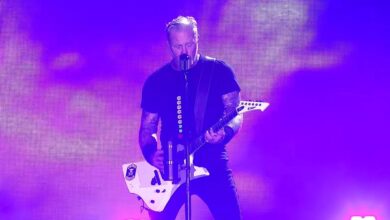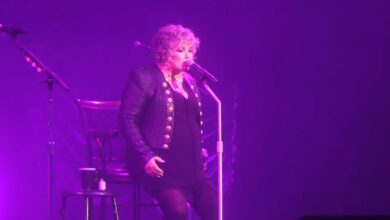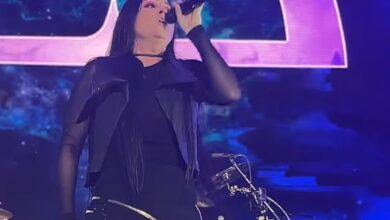Limp Bizkit Live at Shoreline Amphitheatre: How a 1999 Festival Set Became Nu-Metal History and Immortalized Sam Rivers Forever
Shoreline Amphitheatre has always felt like a bowl built for big moments, and on June 18, 1999, Limp Bizkit arrived with the swagger of a band about to level up from radio agitators to cultural event. The day-long BFD festival assembled by San Francisco’s Live 105 had stacked the deck with era-defining acts, but the nu-metal insurgents from Jacksonville treated the rotating stage like a runway for chaos, prizing momentum over mystique. With Significant Other just days from release, they were a fuse waiting for a spark; the amphitheatre’s terraced lawn, ringed by food stalls and late-spring dust, provided the oxygen. In a single, concentrated set, they converted fence-sitters and supercharged believers, the kind of kinetic showcase that explains how a regional radio bash can end up in national lore.
If BFD’s charm is its carnival sprawl, its power lies in the handoff between bands, and Limp Bizkit understood the assignment from the first downbeat. They treated the quick set change like match lighting, snapping into formation as cameras panned the crowd in search of testifiers. This wasn’t the methodical menace of an arena headliner; it was closer to a street takeover, a pop-up riot of riffs and bounce. With the PA throwing low-end like a prizefighter’s body shots, you could feel the shift from curiosity to commitment in the bowl—heads nodding turned into a moving sea, and a thousand phones that didn’t exist yet are somehow there in your mind’s eye.
The beauty of a festival set is how a band distills its thesis, and on this afternoon the thesis was velocity. Archival audio confirms just how compact and ruthless the pacing was: an intro salvo, then a left-right of catalog and near-future singles that felt like cliff notes to a subculture—“Counterfeit,” “Show Me What You Got,” “Stuck,” the Prince wink of “1999,” and the pressure-cooker release valves “Break Stuff,” “Nookie,” and “Faith.” Each cut was less an individual song than a module in a larger machine built for audience control. Hearing it now, the sequencing plays like a miniature origin story, the sound of a band learning how to steer a tidal crowd.
What makes the Shoreline tape special isn’t impeccable fidelity—it’s a document of physicality. You can hear the stage slap back at the drum transients and the open-air smear of guitar overtones as wind and space do their work. It’s the sound of a place: the odd echo from the canopy, the cheer that blooms faster than the PA can compress it, the communal gasp before a downbeat lands. When “Break Stuff” rears up, the room tone seems to thicken; when “Faith” hits, you can practically see the back-half of the lawn sprinting for the rail. The imperfections are what make it feel lived-in and alive.
Context matters, too. This wasn’t just any 1999 date—it was a four-day countdown to Significant Other hitting shelves on June 22, a moment when teen bedrooms, mall CD stores, and MTV rotations were about to synchronize. That timing turned Shoreline into a pressure chamber: the band previewing an album poised to detonate while radio tastemakers watched from the pit. In hindsight, playing a key Bay Area station’s flagship event right before release feels almost surgical, the perfect alignment of marketplace and mayhem. The set became not only a victory lap for Three Dollar Bill, Y’all die-hards, but a sneak peek at the soon-to-be inescapable chorus economy of “Nookie.”
BFD’s lineups were always a snapshot of their moment, and 1999’s cast was a who’s-who of turn-of-the-millennium radio: Red Hot Chili Peppers, blink-182, Live, Silverchair, and more. In that company, Limp Bizkit’s set felt like the accelerant—harder edges than pop-punk, more mischief than alt-rock respectability. They weren’t just competing for applause; they were redefining what a late-afternoon slot could do to an amphitheatre’s pulse. If the Peppers closed with veteran cool and blink translated teen adrenaline, Bizkit weaponized mass participation, turning call-and-response into choreography. It’s telling that fan archives still single out the day for its collision of styles; the contrasts made their punchlines land harder.
Setlist sleuthing paints the picture of a band perfecting the short-form blitz. Average 1999 shows leaned on a core rotation—“Break Stuff,” “Just Like This,” “Counterfeit,” “Stuck,” “Show Me What You Got”—but at Shoreline they packed the suitcase tight, trimming banter in favor of booms. Even the Ministry cover “Thieves” functions as a thesis on abrasion, a crash course in their taste for metallic percussion and pack-chant catharsis. What many later called crass was, in the bowl, a study in dynamics: drop-outs to tease the crowd, surge-backs to scramble the blood pressure, half-time pivots to make the lawn move like one organism.
To watch a band truly arrive is to see them change the meaning of risk in real time. Fred Durst’s emcee instincts, Wes Borland’s shape-shifting textures, John Otto’s pocket mechanics, and Sam Rivers’ anchoring low-end presented as four philosophies bent toward one result: escalation. The way “Nookie” framed space for crowd vocals felt less like a sing-along than an audition for shared authorship. The drop into “Break Stuff” tested how near a threat could come to pure release without tipping over. And the closing sprint through “Faith” inverted expectation on a cover everyone knew, flipping familiarity into a kind of giddy menace.
One reason the show has lingered is the archaeological pleasure of hearing a scene at full roar. 1999 was the apex of tent-pole radio festivals where programmers curated taste in public, and Shoreline’s BFD embodied that model: a single day where you could trace guitar music’s family tree by walking between stages. Bizkit’s slot distilled nu-metal’s thesis—hip-hop cadences over detuned crunch—into something you could feel under your ribcage. If Korn had drawn the blueprint the year before, this was the moment the floor plan went full-scale, and a generation of kids learned what it felt like when drums, sub-bass, and a thousand sneakers all landed on two and four.
The Wolfgang’s Vault recording is also a reminder that brevity can be a superpower. Clocking in under 40 minutes, the set wastes nothing: hype, ignition, churn, and communal exhale. You can hear the band treating each transition like a trapdoor, subbing spectacle for speed. That economy means every chorus hits like a headline, and every breakdown arrives with the precision of a guillotine. It’s not that they lacked more songs—it’s that they understood the physics of a festival: strike fast, leave a silhouette on the scrim, and let the next act deal with the aftershocks.
For those who track line-item history, the Shoreline date sits in a cluster of West Coast momentum—California radio support, festival muscle-memory, and a marketplace primed by MTV rotation. But it’s also human-scale: crowd stewards guiding kids over the rail with a thumbs-up, guitar techs sprinting between swaps, a FOH engineer squinting at meters as the lawn roars. The tape captures those micro-beats, the hum behind the headline. And when the band yanks the throttle into “1999,” the amphitheatre briefly becomes a time capsule—Prince’s future shock refracted through turn-of-the-century angst.
Because Shoreline is a radio station’s party, the energy always carries a sense of hometown pride—even if the band is from three time zones away. That civic voltage becomes part of the music, turning chant-able hooks into civic projects for the day. Limp Bizkit leveraged that electricity with an almost athletic sense of pacing, alternating aerobic choruses with anaerobic breakdowns. The result was a set that felt less like a recital and more like an event you wear home on your skin, the kind that leaves you hoarse in the parking lot and converts your car ride to a post-game show.
The legacy of that afternoon rings louder when you place it beside what came next: Significant Other exploding to No. 1 four days later, the band becoming a lingua franca for mall-punk kids and metal-curious skaters, and the summer of 1999 turning into a chain-reaction of circle pits and radio sing-backs. The Shoreline set reads like a hinge: on one side, a band still proving it on every downbeat; on the other, a phenomenon suddenly impossible to avoid. If you want to hear the door swing, you can—right between the opening hype and the first communal F-bomb.
Revisiting the show in October 2025 carries a new ache. Sam Rivers—the band’s co-founder and low-end conscience—has died at 48, news the band shared in stark, heartbreaking posts. Listening back, his role at Shoreline is unmistakable: the glue between John Otto’s drum torque and Wes Borland’s nerve-ending guitar art, the steadying hand that made the chaos groove. Friends and bandmates called him “pure magic,” the “soul in the sound.” On that 1999 afternoon, you can hear the proof in every bar that pushes the bowl forward.
The obituaries rightly revisit his health battles—liver disease, a transplant, the triumphant return to the stage—and then pivot back to the music, which is where Sam always wanted the conversation to end. At Shoreline, the bass isn’t a spotlight hog; it’s the hum in your bones that tells your legs when to jump. When “Break Stuff” tightens, he’s the iron bar across the chassis; when “Nookie” opens into chant, he’s the handrail that keeps the mass from toppling. In death, those choices feel like a kind of generosity—how to serve a song so completely that strangers feel steadier together.
So much of concert memory is confabulation—angles sharpen, colors oversaturate, and we assign destiny to what might have been chance. But the Shoreline recording offers the rare comfort of evidence. You don’t have to mythologize the pit, the pogo, the loud-quiet-loud impulses; they’re on the tape. Limp Bizkit in 1999 were not yet prisoners of their own iconography; they were a working band with a killer set in a place designed to amplify the joy and danger of their thing. It’s why the show endures: a snapshot of potential just before it hardens into brand.
In the end, the measure of a festival set is whether it changes the oxygen for what follows. By that metric, Limp Bizkit’s BFD turn is textbook. The bands that came after inherited a crowd warmed beyond body temperature, and the kids who filed out under the Shoreline sign took home a vocabulary—drops, breaks, swarm choruses—that they’d use to narrate their summers. When the album arrived four days later, it felt less like a release date and more like a field report from a place many had already visited. That’s the magic of days like this: they make a record feel inevitable.
A quarter century on, the Shoreline set functions as both proof and portal. Proof that a radio festival can mint folklore when timing, tape, and temperament align. Portal because pressing play is a short hop to a younger self who didn’t yet know what these songs would do to charts, friend groups, or the next era of heavy music. If you want to understand why Limp Bizkit became unavoidable in the summer of ’99—and why Sam Rivers’ passing hits so hard—start here, in the afternoon sun, where a band and a crowd decided to believe in the same downbeat.





